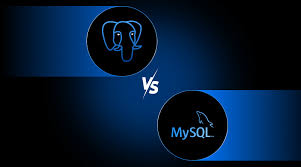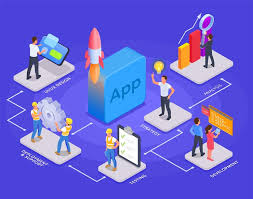API Integration: Connecting Your Digital Ecosystem for Unparalleled Efficiency
Learn what API integration is, how it works, and its immense benefits for businesses of all sizes. Discover how APIs eliminate data silos, automate workflows, and drive innovation by seamlessly connecting disparate software systems.

In today's fast-paced digital world, businesses rely on a multitude of software applications to manage everything from customer relationships (CRM) to enterprise resources (ERP), marketing campaigns, and financial operations. While each application excels in its specific domain, the real magic happens when these systems can "talk" to each other, seamlessly exchanging data and triggering actions without manual intervention. This is the essence of API integration, a fundamental practice that underpins modern business efficiency and innovation.
What is API Integration?
An API, or Application Programming Interface, is a set of rules and protocols that allows different software applications to communicate and interact with one another. Think of an API as a waiter in a restaurant: you (the client application) tell the waiter (the API) what you want from the kitchen (the server application), and the waiter brings it back to you. You don't need to know how the kitchen prepares the food; you just need to know how to order.
API integration is the process of connecting two or more applications via their APIs to enable a seamless flow of data and functionality between them. Instead of manually exporting data from one system and importing it into another, an API integration automates this process, ensuring real-time or near real-time data synchronization and workflow orchestration.
How Does API Integration Work?
While the underlying technical details can be complex, the core mechanism of API integration typically involves:
-
Request: One application (the client) sends a request to another application's API (the server), asking for specific data or to perform an action. This request is formatted according to the API's defined rules (e.g., using HTTP methods like GET, POST, PUT, DELETE for REST APIs).
-
Authentication: For security, most APIs require authentication (e.g., API keys, OAuth tokens) to ensure that only authorized applications can access their resources.
-
Processing: The server application receives the request, validates it, processes the desired operation (e.g., retrieves data from a database, updates a record), and generates a response.
-
Response: The server sends a response back to the client application, typically in a standardized format like JSON or XML, indicating the outcome of the request and including any requested data.
This constant back-and-forth communication allows applications to work in concert, creating powerful automated workflows.
The Transformative Benefits of API Integration
The impact of robust API integration on a business is profound, leading to a ripple effect of improvements:
-
Eliminates Data Silos: Data often gets trapped in individual applications. API integration breaks down these silos, ensuring that critical information is accessible and consistent across all relevant systems, providing a unified view of your operations and customers.
-
Automates Business Processes: From automatically updating CRM records when a payment is processed in an accounting system, to syncing inventory levels across e-commerce platforms, API integration automates countless manual tasks. This frees up employees to focus on more strategic, value-added activities.
-
Boosts Operational Efficiency: By streamlining workflows and automating data transfer, businesses can significantly reduce human error, accelerate processes, and operate with greater agility.
-
Enhances Customer Experience: A connected ecosystem means customer data is always up-to-date and accessible. This enables personalized interactions, faster issue resolution, and a more consistent experience across all touchpoints.
-
Facilitates Innovation & New Services: API integration makes it easier to combine functionalities from different services to create entirely new products or features. Think of travel booking sites that pull data from various airlines, hotels, and car rental companies, or food delivery apps that integrate restaurant menus and mapping services.
-
Improves Data Accuracy & Insights: With automated data synchronization, the risk of outdated or inconsistent information is drastically reduced. This leads to cleaner data, which is crucial for accurate analytics, reporting, and informed decision-making.
-
Scalability & Flexibility: API-driven architectures are inherently more scalable. You can easily add new applications or replace existing ones without disrupting the entire system, allowing your tech stack to grow and adapt with your business needs.
-
Reduces Development Costs: Instead of building every feature from scratch, businesses can integrate third-party APIs to leverage existing functionalities (e.g., payment processing, mapping, communication). This significantly reduces development time and costs.
Common Use Cases for API Integration
API integrations are ubiquitous, powering much of the digital world we interact with daily:
-
E-commerce: Connecting online stores with payment gateways, shipping providers, inventory management systems, and accounting software.
-
CRM & Marketing Automation: Syncing lead data from marketing platforms to CRM, automating email campaigns based on CRM events, and pulling sales data into marketing analytics.
-
Customer Service: Integrating help desk software with CRM to provide agents with a complete customer history, or connecting with communication channels like live chat and social media.
-
Financial Services: Linking banking apps with budgeting tools, or integrating lending platforms with credit scoring agencies.
-
Logistics & Supply Chain: Connecting order management systems with warehouse management, shipping carriers, and real-time tracking services.
-
HR & Payroll: Integrating HR platforms with payroll systems, benefits providers, and time-tracking tools.
The Future of API Integration in 2025 and Beyond
The importance of API integration is only set to grow. Several trends are shaping its future:
-
Integration Platform as a Service (iPaaS): Cloud-based iPaaS solutions (e.g., MuleSoft, Workato, Zapier, Tray.io) are becoming increasingly popular, offering low-code/no-code platforms with pre-built connectors and visual interfaces to simplify complex integrations for even non-developers.
-
Event-Driven Architectures (EDAs) and Webhooks: The shift towards real-time data flow means more reliance on webhooks and event-driven patterns, where applications automatically push data to integrated systems when specific events occur.
-
GraphQL APIs: Gaining traction as an alternative to REST, GraphQL allows clients to request exactly the data they need, reducing over-fetching and optimizing network requests, particularly for complex data structures.
-
AI and Machine Learning Integration: APIs will increasingly facilitate the seamless integration of AI/ML models into various business processes, enabling intelligent automation, predictive analytics, and hyper-personalization.
-
API Security: As integrations become more prevalent, robust API security (authentication, authorization, rate limiting, threat detection) will remain a top priority.
-
Composable Architectures: Businesses are moving towards composable enterprises, where modular, API-driven components can be easily assembled and reassembled to adapt to changing market demands.
Conclusion:
In an increasingly interconnected world, API integration is no longer a luxury but a strategic imperative. It's the engine that drives digital transformation, allowing businesses to create agile, responsive, and highly efficient operations. By breaking down data silos, automating workflows, and fostering seamless communication between systems, API integration empowers organizations to enhance productivity, deliver superior customer experiences, and unlock new avenues for innovation. Embrace the power of APIs, and you'll be well-positioned to thrive in the dynamic digital landscape of today and tomorrow.




